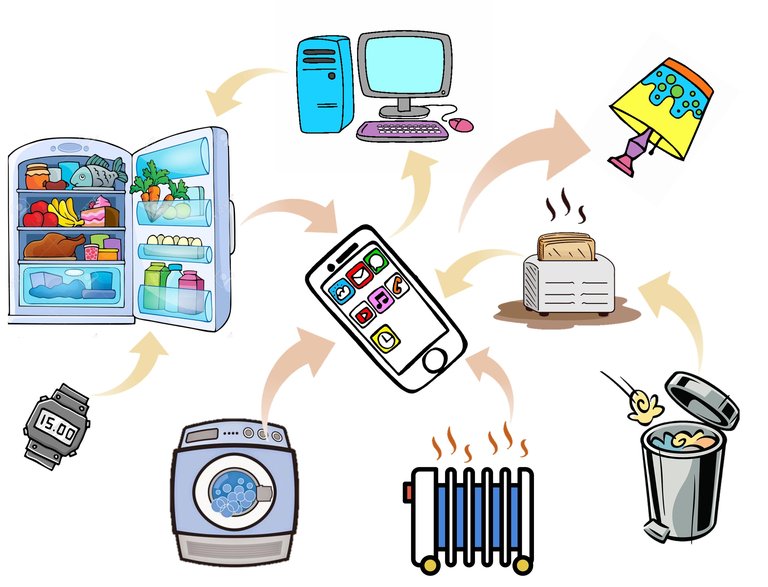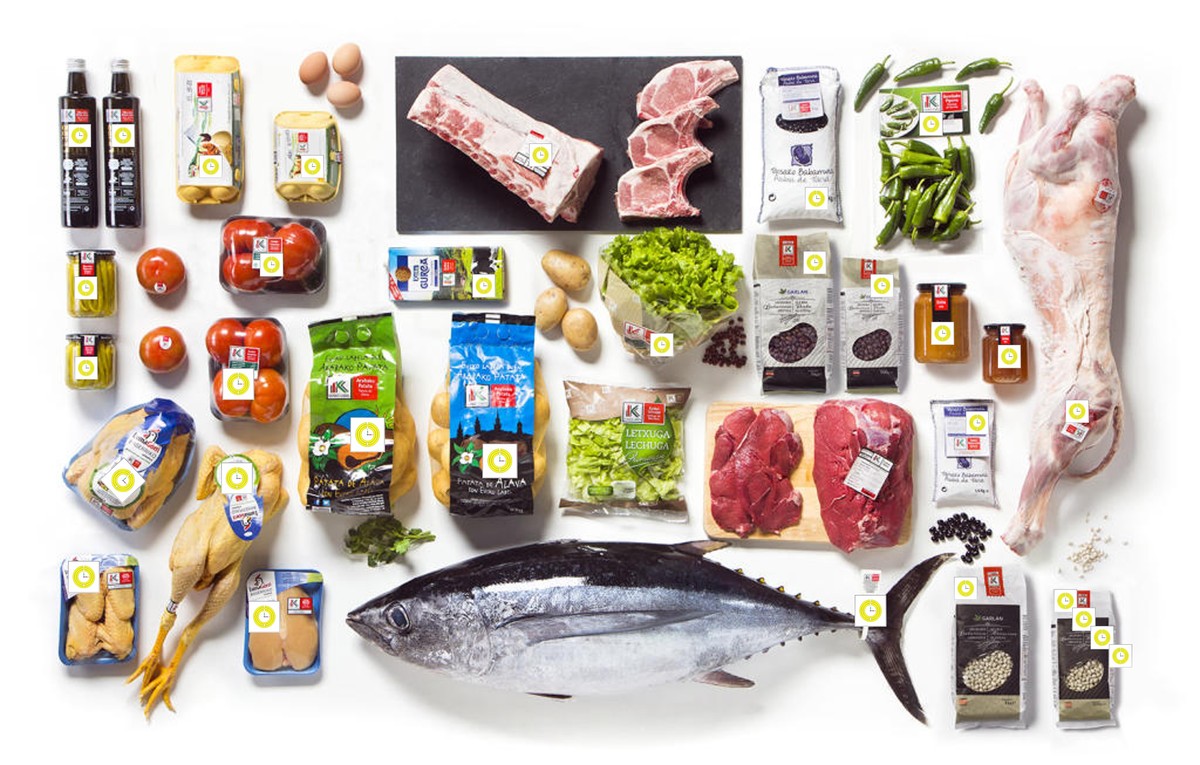What do apples say to yogurt?
“I am cold!” – shouts the apple trembling. “Well, I feel great” - the proud yogurt responds. How is it possible that the products inside the fridge are talking? With the Internet of Things IoT, which is so famous recently! With this cutting-edge technology, devices share information with each other. In particular, each tool collects information about its situation and what happens in its environment, communicates it to other instruments and interacts among them.

The Internet of Things era
You're not surprised, reader, because you're closer than you think, that phenomenon that seems fantastic. Isn't it constantly communicating with the smart clock or smartwatch? Why do you stop your car when you notice it's too close to the front vehicle? It is increasingly evident that we are not the only ones who think…
If you've ever wondered how Alex could have the ability to control the lights, the music and the temperature of the house, the answer is that the "brain" of all thinking objects is a complex, previously programmed electronic structure. In the above structure there are a number of expensive sensors, composed of batteries that are rapidly depleted and chips that are recently so poor.
For example, in some shops, in order for the automatic collection system to operate the products only to enter the basket, it is necessary that the labels of the millions of products on sale have a sensor. The problem is that the need for so many sensors needs to use so many chips, and today chip generation is not an easy task, not least because of the shortage of semiconductor materials for manufacturing. Given the importance of the shortage of chips, this situation has been given its own name: “Chips crisis.”
An alternative solution to the chip crisis
According to experts, the only way to end the semiconductor crisis we have suffered since 2020 is to make more chips in concrete form. However, several universities around the world are developing a new system that converts interactive devices into cheap and passive (without battery): CHIPLESS RFID technology. Radio frequency identification without chip, technology 2.
To make it clearer what I'm talking about, I'm going to try to explain what chipless technology is. Who knows whether in a couple of years' time we are not starting to hear this term more and more in the media!
RFID (Radio Frequency Identification) with a chip is not a new concept but has been developing much since the 1960s. Despite not being aware of this, wireless identification with this type of identification is widespread in society: the automatic VI-T toll of motorways, the system that activates the door alarms from the shops, the identification with which the pet is inserted, the credit cards without contact or the bus payment cards…
Chipless technology can be considered based on common RFID, but with the difference that it does not use chips. For every object you want to identify or monitor, a small, flexible sticker or label, called tag, must be placed corresponding to a code of conduct. On the other hand, instead of normal ink, the printing of labels is done through a liquid metal compound. Therefore, product information is not obtained by a camera (as with the codes we are used to), but by a reader who emits and receives electromagnetic waves.
_galeria.jpg)
Since the objective of this article is to obtain an overview of chipless technology, I will not provide any more technical details. In addition, the most important question that this new system can generate for us remains to be answered.
When and where will we find chipless labels and how will they affect our everyday lives in a few years' time?
The Internet of Things extends to all areas of society, including industry. Changes in environmental physical parameters have a great influence on the state and quality of food. Humidity, temperature, pH and gas concentration vary around popular packages and indicate a deterioration of the domestic product. Therefore, to ensure consumer safety, it is important to monitor these parameters both within the product package and in the surrounding peripheral environment 4.
Chipless tags have added value that I haven't mentioned yet, because in addition to identifying objects, they can detect features about their condition, as they can act as sensors. Measuring food from its production to its arrival in stores or supermarkets is very important. Therefore, one of the most attractive applications of chipless is the food industry, in the control of the cold chain of products.
The implementation of tags without chips would be such that it would be done with codes of conduct; the main difference would be in the payment of purchases in kutxa. For example, when yoghurts pass through the scanner, they could know, in addition to the price, the degree of conservation of them when they have been transported by truck. Consequently, in addition to the expiry date stated in the package, it would be known whether the yoghurts are in good condition for immediate consumption.
The practice of occasional rinsing during food transportation can determine the timing and cause of the deterioration of products. In addition, digital data can be shared in the cloud, so consumers, producers and process brokers can easily get all the information before food reaches the point of sale.
Eusko Label® Smart
An innovative wireless communications system that is still developing. The most important challenges today are the manufacture of a cheap reader that companies would buy and the improvement of signal processing so that waves can be clearly detected in any medium. However, the progressive discovery of researchers is turning to the Chipless technology in universities and research centers such as Medical5, Estadexcel 6, France 7, Portal 8, Portal 9 and Euskadi.
In Euskadi, 350,000 tons of food are spoiled per year (160 kg/person/year)11. Do you not think there is an optimal solution to reduce this amount? In future we will be able to give our own voice to products without the need for chips, cables and batteries.
Remember this name: Chip less, chip no.
BIBLIOGRAPHY
1.- López JC (author), Xataka [Internet]. Madrid: Webedia; 2021 [query data 26-01-2022]. [Buruntzarekin bukatzea plan bat dago semiconductors: zer da eta nola azken egingo du chips arabera manufacturers]. Available: https://www.xataka may.com/components/hay-plan-llan-plates –consuma -semicondusap-bathrobe -queai-sol-end-chips
2.- Karmakar NC, Amin EM, Saha DC. Chipless RFID sensors. Hoboke, New Jersey: Wiley; 2016.
3. D. Alberto K, Muller D. RFID handbook: fundamentals and applications in contactless smart cards, radio frequency identification and near-field communication. 3rd ed. Oxford: Wiley-Blackwell 2010.
4.Gregor-Svetec D. ActinPak [Internet]. [date accessed 03-02-2022]. Active and intelligent based packaging–innovation and market introduction; [39 pages]. Available from http://www.actinpak.eu/? -content/uploads/2017/10/Somewhat. pdf
5.- Monash University [Internet]. Australia: Monash University; [consultation date 11-02-2022]. Profile Nemai Karmakar. Available at https://research .monash.edu/en/persons/nemai-karmakar
6. Massachusetts Institute of Technology. Massachusetts, USA; [date 11-02-2022]. Massachusetts Institute of Technology Auto-ID laboratory; [screen 1]. Available at https://autoid.mit.edu/
7. Laboratoire de Conception et d'Intégration des Systèmes [Internet]. Valence, France, [query data 11-02-2022]. [Etienne Perret]. Available: https://lcis.grenoble-inp.fr/themes/etienne-perret
8. Borgese M, Genovesi S, Manara G, Costa F. Radar Cross Section of Chipless RFID Tags and BER Performance. IEEE Trans. [Vocal antennas]. 2021;69(5):2877-86. Available: doi: 10.1109/TAP.2020.3037800
9. Herrojo Prieto C (author), Martin Antolín F (director). [New strategies for the design of Chipl-RFID systems and applications]. [Universitat Autònoma de Barcelona]. Departament d'Enginyeria Electrònica; 2018. Available at https://www.tresearch.cat/handle/10803/565904#page=1
10. Deputation Foral de Gipuzkoa [Internet]. Gipuzkoa: Provincial Council of Gipuzkoa; 2020 [date consultation 08-02-2022]. [New contrasted collaborations between Deputation and Tecnun]. Available: https://www.gipuzko.eus/es/-/elkarlan-berri-contrast-have -republic-y-tecnun
11. Astolfi B (author), Chain SER [Internet]. 2021 [reference date 18-12-2021]. Every Basque wastes almost half a pound of food a day. Available: https://chained. com/emisora/2021/09/28/radio_bilbao/1632832207_039389.html#:~:text=In%20Euskadi%20se%20se%20que,kilo%20de%2020%20a%20d%C3%AD
Buletina
Bidali zure helbide elektronikoa eta jaso asteroko buletina zure sarrera-ontzian













